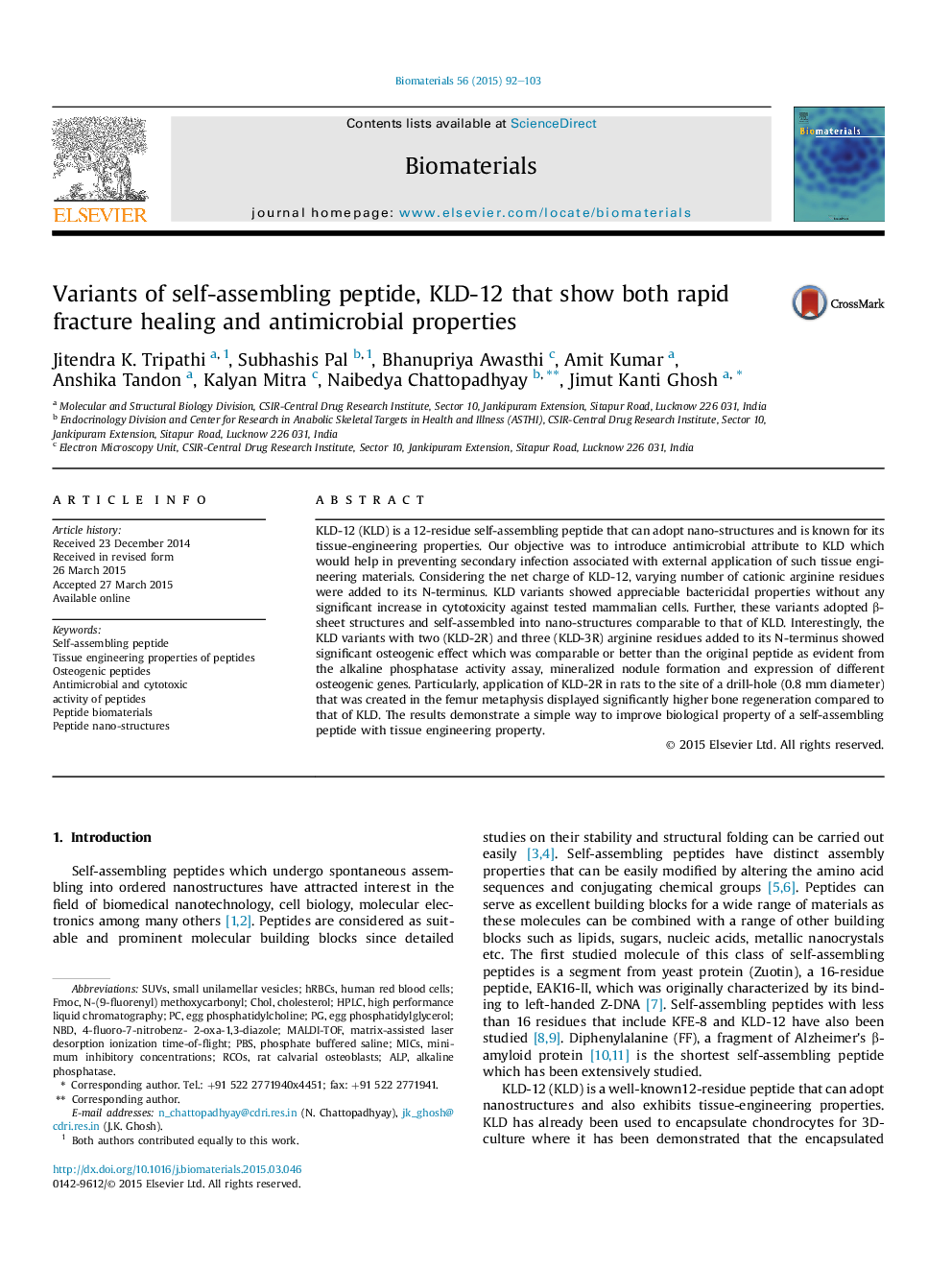| Article ID | Journal | Published Year | Pages | File Type |
|---|---|---|---|---|
| 6485700 | Biomaterials | 2015 | 12 Pages |
Abstract
KLD-12 (KLD) is a 12-residue self-assembling peptide that can adopt nano-structures and is known for its tissue-engineering properties. Our objective was to introduce antimicrobial attribute to KLD which would help in preventing secondary infection associated with external application of such tissue engineering materials. Considering the net charge of KLD-12, varying number of cationic arginine residues were added to its N-terminus. KLD variants showed appreciable bactericidal properties without any significant increase in cytotoxicity against tested mammalian cells. Further, these variants adopted β-sheet structures and self-assembled into nano-structures comparable to that of KLD. Interestingly, the KLD variants with two (KLD-2R) and three (KLD-3R) arginine residues added to its N-terminus showed significant osteogenic effect which was comparable or better than the original peptide as evident from the alkaline phosphatase activity assay, mineralized nodule formation and expression of different osteogenic genes. Particularly, application of KLD-2R in rats to the site of a drill-hole (0.8 mm diameter) that was created in the femur metaphysis displayed significantly higher bone regeneration compared to that of KLD. The results demonstrate a simple way to improve biological property of a self-assembling peptide with tissue engineering property.
Keywords
PBSCHOLMALDI-TOFHRBCsNBDMICSFMOCSUVsALPAlkaline phosphataseegg phosphatidylcholineegg phosphatidylglycerolminimum inhibitory concentrationsmatrix-assisted laser desorption ionization time-of-flightPhosphate buffered salineSelf-assembling peptidehigh performance liquid chromatographyHPLCcholesterolsmall unilamellar vesiclesHuman red blood cells
Related Topics
Physical Sciences and Engineering
Chemical Engineering
Bioengineering
Authors
Jitendra K. Tripathi, Subhashis Pal, Bhanupriya Awasthi, Amit Kumar, Anshika Tandon, Kalyan Mitra, Naibedya Chattopadhyay, Jimut Kanti Ghosh,
